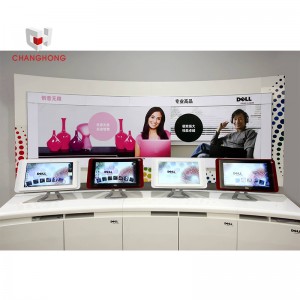Aug . 04, 2024 03:08 Back to list
Estimating the Typical Expenses for Retail Shop Fitting in Today's Market Trends and Insights
Average Shop Fitting Costs What You Need to Know
Shop fitting is an essential aspect of setting up a retail business. It involves designing and equipping a retail space to make it functional, attractive, and conducive to sales. Whether you're launching a boutique, a café, or any other type of retail outlet, understanding average shop fitting costs is crucial for effective budgeting and planning.
Understanding Shop Fitting
Shop fitting encompasses a wide range of services, including design, construction, and the installation of fixtures and furniture. These fittings are tailored to meet the specific needs of the business while creating an appealing atmosphere for customers. Factors that influence fitting costs include the size of the retail space, the complexity of the design, quality of materials used, and additional features such as lighting and signage.
Average Costs Breakdown
On average, shop fitting costs can range significantly based on various factors. For a basic fitting in a small retail space (around 500 square feet), costs can start from approximately $20,000 to $50,000. This typically covers essential elements such as shelving, cabinets, and basic flooring.
For medium-sized shops, costs tend to increase considerably. A fitting for a space around 1,000 square feet can range from $50,000 to $100,000. This mid-range fitting often includes more elaborate design elements, higher-quality materials, and specialized lighting.
For larger retail spaces, particularly in high-demand areas or for businesses that require custom designs, costs can soar
. Shop fitting for spaces larger than 2,000 square feet can easily exceed $100,000, with some high-end establishments spending upwards of $250,000 or more.Factors Affecting Costs
average shop fitting costs

1. Location The geographical location of your shop can heavily influence costs. Urban areas or high-traffic regions tend to have higher labor and material costs compared to rural locations.
2. Design Complexity A unique design tailored to attract specific target demographics may require custom work, which significantly increases costs. Simple, standardized fittings are generally more cost-effective.
3. Quality of Materials Investing in high-quality materials such as premium woods, glass displays, and durable flooring can enhance the aesthetic appeal but will also increase shop fitting costs.
4. Labor Costs The cost of skilled labor in your area can affect overall costs. Hiring experienced fitters may come at a premium, but it can lead to better outcomes in terms of quality and design.
5. Additional Features Extras such as advanced lighting systems, point-of-sale systems, or digital displays can add to the overall budget. These elements can enhance the shopping experience but need to be carefully considered in the budget.
Budgeting for Success
When planning your shop fitting, it’s essential to conduct thorough research and gather multiple quotes from different contractors. This will help you understand the average costs in your location and for your specific requirements. Creating a detailed budget that aligns with your business goals will also enable you to prioritize essential fittings and avoid unexpected expenses.
Conclusion
In conclusion, while establishing a budget for shop fitting can seem daunting due to the numerous variables involved, understanding average costs and the factors that affect them is crucial. By carefully planning and considering your options, you can create an attractive retail environment that not only meets your needs but also resonates with your target audience. A well-fitted shop can enhance customer experiences and ultimately drive sales, making it an investment worth considering seriously.
-
The Benefits of Electronic Shelf Labels for Modern Stores
NewsJul.01,2025
-
Space-Saving Retail Store Furniture Designs for Small Shops
NewsJul.01,2025
-
Slatwall vs. Gridwall: Which Store Fixture is Right for Your Business?
NewsJul.01,2025
-
Shop Fittings: Essential Elements for a Functional Retail Space
NewsJul.01,2025
-
How to Design a Minimalist Cosmetic Shop Display
NewsJul.01,2025
-
Creative Clothes Shop Display Ideas to Attract More Customers
NewsJul.01,2025


















































































































